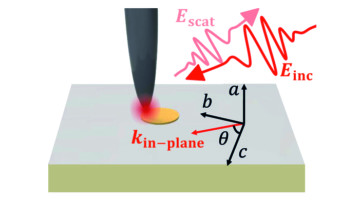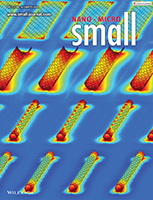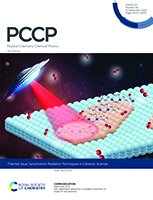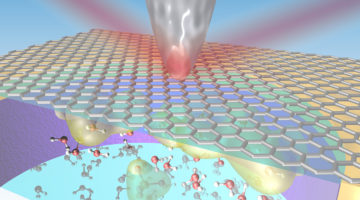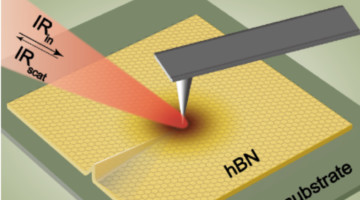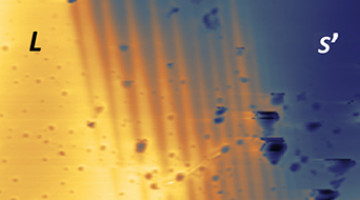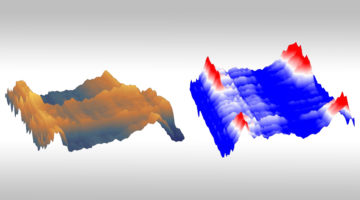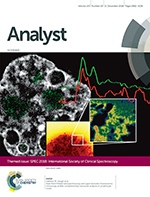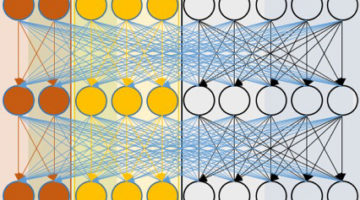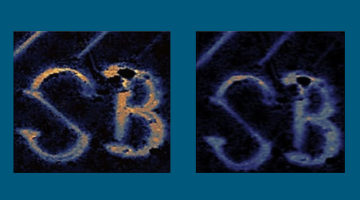Scattering-type scanning near-field optical microscopy (s-SNOM) focuses infrared light to dimensions below the diffraction limit, measuring properties with components perpendicular to the sample surface. Researchers have now devised a way to probe components parallel to the sample, where the technique has been less sensitive. Read more »
ALS Work Using Infrared Nanospectroscopy
Broadband infrared (IR) light is focused onto the metal tip of an atomic force microscope (AFM). As it scans over the sample, the tip acts as an antenna, directing the light onto a tiny region of the sample. With a spatial resolution up to a thousand times better than conventional Fourier-transform infrared (FTIR) spectroscopy (i.e., below the diffraction limit for IR light), synchrotron infrared nanospectroscopy (also known as SINS) enables the investigation of nanoscale phenomena, even under ambient and environmental conditions that are essentially inaccessible by other techniques. Read more…
Hybridized Radial and Edge Coupled 3D Plasmon Modes in Self-Assembled Graphene Nanocylinders
The researchers report hybridized 3D plasmon modes stemming from 3D graphene nanostructures, resulting in non-surface-limited (volumetric) field enhancements and a four orders of magnitude stronger field at the openings of cylinders than in rectangular 2D graphene ribbons. Read more »
Site-dependent selectivity in oxidation reactions on single Pt nanoparticles
Heterogeneous catalysis is a surface-controlled phenomenon in which different surface sites often show variations in reactivity, posing a major complication for the chemical industry. Here, site-dependent selectivity in oxidation reactions on Pt nanoparticles was identified by conducting IR nanospectroscopy measurements while using allyl-functionalized N-heterocyclic carbenes (allyl-NHCs) as probe molecules. Read more »
Infrared Nanospectroscopy at Graphene–Liquid Interfaces
Researchers developed a new infrared approach to probing the first few molecular layers of a liquid in contact with a graphene electrode under operating conditions. The work offers a new way to study the interfaces that are key to understanding batteries, corrosion, and other bio- and electrochemical phenomena. Read more »![]()
![]()
Infrared Nano-Mapping of Local Strain in 2D Materials
Researchers have demonstrated an infrared technique to map and analyze strain in atomically thin crystals of hexagonal boron nitride (hBN) at the nanoscale. This ultrasensitive strain-imaging method could be a promising tool for the examination of low-dimensional materials of interest for electronic and photonic devices. Read more »
Infrared Light Reveals Microstripes at Insulator-Metal Transition
In this study of a current-driven insulator-to-metal transition, a distinctive stripe pattern develops between the insulating and metallic phases. The work reveals remarkable new features of electrically induced insulator-to-metal transitions in materials with potential applications in energy-efficient memory and transistor devices. Read more »![]()
Expanding the Infrared Nanospectroscopy Window
An innovative infrared-light probe with nanoscale spatial resolution has been expanded to cover previously inaccessible far-infrared wavelengths. The ability to investigate heterogeneous materials at nanometer scales and far-infrared energies will benefit a wide range of fields, from condensed matter physics to biology. Read more »![]()
![]()
Near-field infrared nanospectroscopy and super-resolution fluorescence microscopy enable complementary nanoscale analyses of lymphocyte nuclei
Recent super-resolution fluorescence microscopy studies have revealed significantly altered nuclear organization between normal lymphocyte nuclei and those of classical Hodgkin’s lymphoma. Reported here are the first near-field IR imaging of lymphocyte nuclei, and far-field IR imaging results of whole lymphocytes and nuclei from normal human blood. Read more »
Scientists Use Machine Learning to Span Scales in Shale
Machine-learning techniques have been used to integrate fine- and large-scale infrared characterizations of shale—sedimentary rocks composed of minerals and organic matter. Understanding shale chemistry at both the nano and mesoscale is relevant to energy production, climate-change mitigation, and sustainable water and land use. Read more »
Phase Diagram Leads the Way to Tailored Metamaterial Responses
Researchers discovered an innovative way to independently control two optical responses in a single-material system by utilizing the material’s phase diagram. This unique combination of material, methods, and results could lead to a paradigm shift in the design of metamaterial devices that manipulate light. Read more »![]()
![]()
